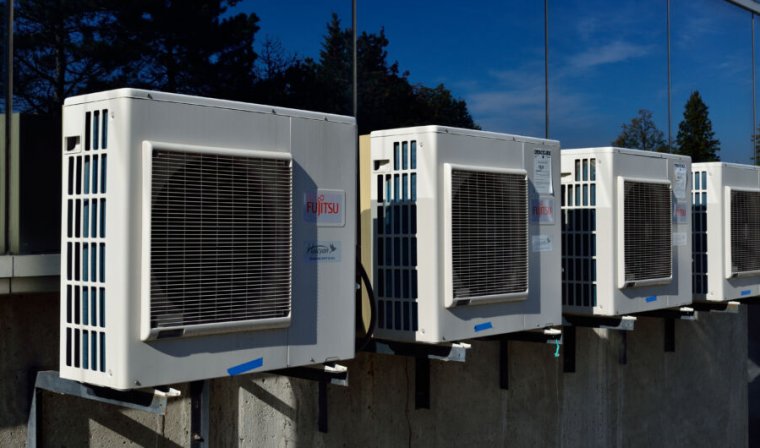Global warming potential —
Hydrofluorocarbons saved the ozone layer, but they’re killing the climate.
Tim De Chant
–

The US Environmental Protection Agency announced a rule Monday that would phase out hydrofluorocarbons (HFCs), the potent greenhouse gases that are widely used as refrigerants.
Though HFCs aren’t intentionally emitted in the regular use of refrigerators and air conditioners, they often leak out at various phases in an appliance’s life cycle, from manufacturing through disposal. One of the most widely used HFCs, R-134a, causes 1,430 times more warming than an equivalent amount of carbon dioxide over 100 years. Another that is commonly used in supermarkets, R-404A, has a global warming potential of 3,900. Eliminating the use of HFCs worldwide would reduce emissions enough to avoid up to 0.5˚C (0.9˚F) of warming by 2100.
HFCs were first introduced in the mid-1990s as replacements for chlorofluorocarbons (CFCs), which were the previous standard for refrigerants. CFCs deplete the ozone layer that protects the Earth from harmful ultraviolet radiation, and decades of use led to a massive hole, discovered in 1974, in the atmosphere above Antarctica. As concern over the ozone hole grew, countries from around the world signed onto the Montreal Protocol, which called for the phaseout of CFCs and other ozone-depleting substances. Finalized in 1987 and ratified by the US Senate the following year, the treaty is widely seen as a success—as CFC use has dwindled, the ozone layer has begun to repair itself, and by 2040, experts believe the hole will begin to steadily close.
When HFCs were introduced, they were an appealing replacement for CFCs. They have shorter lifespans than CFCs and are less reactive with ozone. But as their use grew, so did concern over their potential as greenhouse gases. And the concerns are real—leaks in supermarket refrigerators and freezers are so widespread that the industry estimates supermarkets lose 25 percent of their refrigerant charge annually. Once again, countries from around the world came together to address the issue, signing the Kigali Amendment that updated the Montreal Protocol to include HFCs. Notably, neither the US nor China has ratified the agreement, but last month, the two largest greenhouse gas emitters both agreed to eliminate the use of HFCs.
Time for a change
In the US, the phaseout enjoys support from both major political parties, and there are already substitutes available for new refrigerators and air conditioners. One substitute that is already in many models of refrigerators is isobutane. Known in the industry as R-600a, it’s inexpensive, it has almost no ozone depletion potential, and it has a small global warming potential (three instead of R-134a’s 1,430). Already, manufacturers have begun switching to the new refrigerant.
But the switch took decades longer than it needed to. Major chemical companies like DuPont, which produced CFCs, fought CFC regulations until the companies had replacement HFCs ready and patented, and a report by Inside Climate News shows they worked to slow the HFC phaseout, too. Isobutane is cheap, not patentable, and widely available—it’s most commonly known as a fuel for camp stoves.
Almost a decade ago, isobutane and other hydrocarbon refrigerants seemed poised for use in the market. In 2011, Underwriters Laboratories (UL) gave the refrigerants the go-ahead, and the EPA followed soon after. But then UL slashed their limits, citing a risk of fire if hydrocarbon refrigerants were to leak in a small room that also contained an open flame, like from a gas-fired water heater. Other experts have said the change was unwarranted and that UL’s fire risk scenario was extremely unlikely to occur. But in 2017, UL raised the limit again, and the EPA followed. Appliances using isobutane have begun to trickle onto the market.
Ultimately, the fire issue may be moot as some grocery stores have begun switching to using carbon dioxide as a refrigerant. Though it requires higher pressures throughout the cooling system, carbon dioxide is not detrimental to the ozone layer. And its global warming potential? One.

